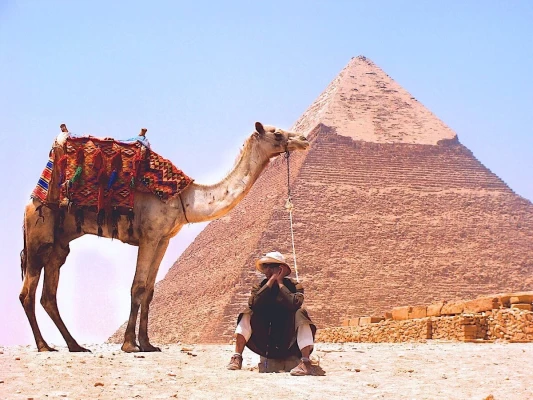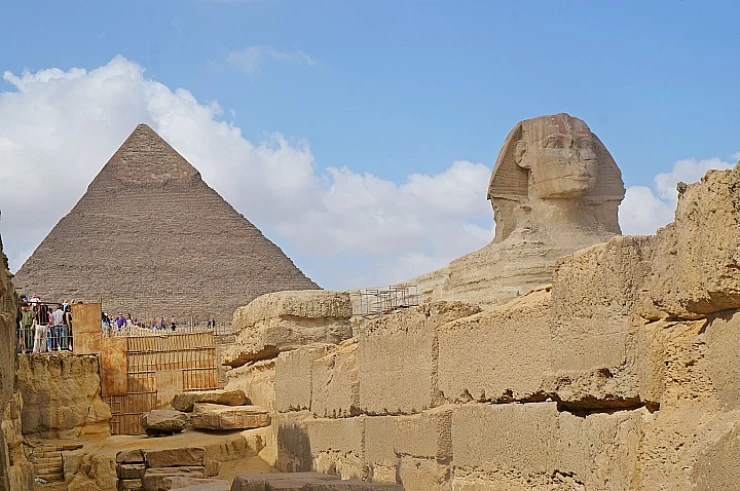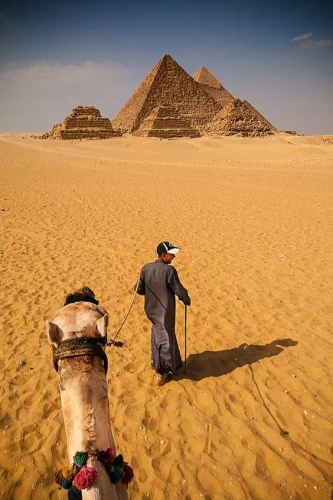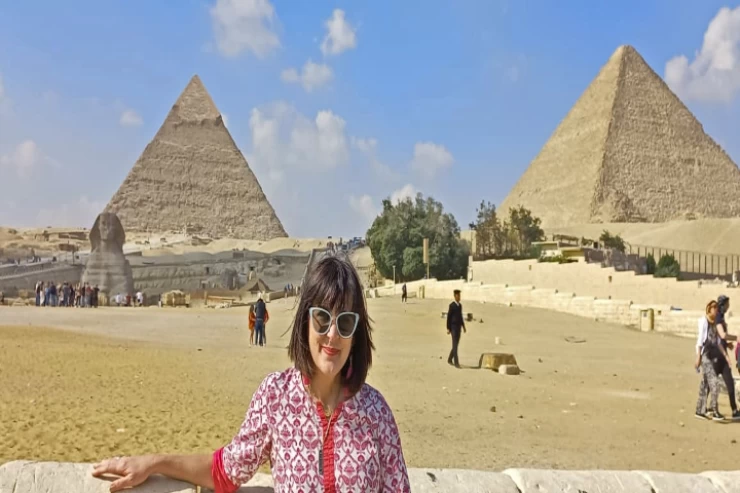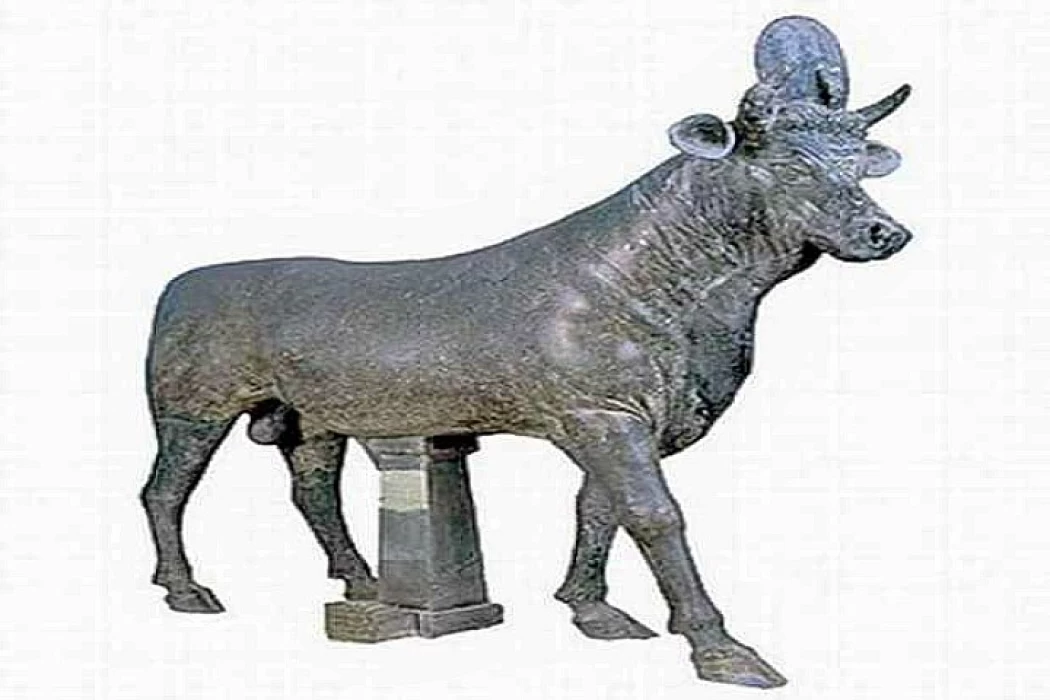
Dios Serapis | Dioses del Antiguo Egipto
Serapis generalmente se representaba como el sol, la fertilidad y el más allá. Su compañera fue Isis, la esposa de Osiris, y una de las deidades más populares según la religión en el antiguo Egipto durante el Período Ptolemaico. Serapis fue representado como un hombre con un elaborado peinado griego que vestía túnicas de estilo griego y una barba completa. A menudo lleva una canasta en la cabeza. A veces se le representa como una serpiente en honor a su conexión con el inframundo y la fertilidad.
El culto de Serapis fue un gran éxito para la dinastía ptolemaica, y se construyeron varios templos en Egipto para su adoración. El templo principal estaba en la capital ptolemaica, Alejandría. Según el geógrafo Estrabón, el Serapeum de Alejandría se encontraba al oeste de la ciudad. Aunque fue un sitio importante en todo el Mediterráneo.
Los dioses del antiguo Egipto eran muy parecidos a los seres humanos que amaban y odiaban, se sentían celosos y luchaban, se vengaron, asesinaron y también murieron durante un mito asombroso lleno de alegres, acciones y eventos dramáticos que inspiraron a los directores y productores de películas modernas a crear películas de fama mundial sobre la grandeza de los faraones y los dioses a los que adoraban.
Nuestro equipo le ayudará a viajar a Egipto y experimentar el clima soleado de nuestro hermoso país durante la Semana Santa de 2024, gracias a sus amplios conocimientos sobre el turismo egipcio. Puede personalizar su paquete seleccionando uno de nuestros paquetes de viajes a Egipto o aprovechar al máximo su tiempo en una visita corta, aprendiendo más sobre la historia egipcia y sus fascinantes relatos y experimentándola a través de tours privados en El Cairo. Únase a una de nuestras económicas excursiones a Egipto por el desierto del Sáhara, como las excursiones a Siwa desde El Cairo, por ejemplo, o preferiblemente excursiones al Desierto Blanco de Egipto. Descubra nuestros circuitos de un día a Asuán, haga una excursión de un día desde Asuán a Abu Simbel, o viaje por tierra y disfrute de nuestros circuitos de un día a Luxor para ver los increíbles templos de Karnak, el Templo de Luxor, el Templo de Hatshepsut, y contemple las tumbas bellamente pintadas del Valle de los Reyes, este es el lugar donde los reyes y gobernantes del nuevo reino descansan en paz y aprenden sus rituales de momificación y enterramiento.
Serapis was usually depicted as the sun, fertility, and afterlife. His companion was Isis, the wife of Osiris, and one of the most popular deities according to religion in ancient Egypt during the Ptolemaic Period. Serapis was represented as a man with an elaborate Greek hairstyle wearing Greek-style robes and a full beard. He often wears a basket on his head. Sometimes he is depicted as a serpent in honor of his connection with the underworld and fertility.
The cult of Serapis was a huge success for the Ptolemaic dynasty, and various temples were built in Egypt for his worship. The main temple was in the Ptolemaic capital, Alexandria. According to the geographer Strabo, the Serapeum in Alexandria stood in the west of the city. Although it was an important site throughout the Mediterranean.
The marble head of the god Serapis was created. It was found in 1999 while excavating at the sea's bottom in Abu Qir, Alexandria. His temple in Alexandria, the Serapeum, was considered one of the most important temples, and Serapis was worshipped as the god of healing and the afterlife.
The god Serapis is depicted with curly hair and a thick beard. On the top of his head is a hole for the calathos, decorated with plants in relief, which Serapis was often depicted with and which was found far from the head on the seabed east of the city of Canopus.
The story began at the walls of the ancient city, where a muscular young man sent his men to the city of Pontus to bring a new god to Alexandria, the god "Serapis". This was what Ptolemy I (Soter) dreamed of, to include the worship of the god Serapis within the Alexandrian trinity in order to consolidate the rule of the Ptolemies in Egypt.
There are other opinions that this idol was a gift from the city of Sinope during the reign of Ptolemy II (Philadelphus) in response to Egypt's gift of wheat to that city.
Some historians believe that the idea started during the reign of Alexander the Great, when he saw Serapis in a dream and ordered the construction of a temple for him.
The Egyptians had been worshipping the same gods for thousands of years, and Ptolemy I knew they were unlikely to accept a new deity. So he took aspects of two of the most popular gods—Osiris and Apis—and mixed them with the Greek king of the gods, Zeus, building on the already established Egyptian cult of Osirapis, to create Serapis. The historian Plutarch (c. 45/46–120/125 CE)
The seven-pointed star was a symbol of the Egyptian god Serapis. This bust, possibly found in Egypt, shows a man wearing a diadem adorned with a seven-pointed star. Traces of paint are visible: Red on the hair and beard, and pale blue on the eyes. The wreath was once gold-plated, but little is left of it now.
A golden wreath depicting Serapis in front of a temple facade, found inside a pottery vessel in the village of Dosh in the Kharga Oasis. The artifact dates back to the Roman era and is housed in the National Museum of Egyptian Civilization, the first of its kind in Egypt and the Arab world. Serapis is the ancient Egyptian god of healing.







